 Bunta Sugawara spits hot lead in Machine Gun Dragon. 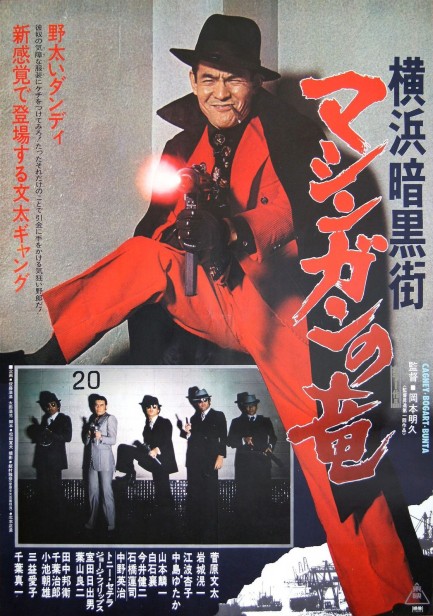
Cagney! Bogart! And... Bunta? This poster, if you look at the text in the righthand margin, suggests that Bunta Sugawara is a gangster on that level. We'll see about that in a minute, but one thing is sure—this is a kick-ass image of him. It was made for his crime flick Yokohama ankokugai mashingan no ryu, known in English as Yokohama Underworld: The Machine-Gun Dragon. Sugawara plays a rogue gunman, thief, and fashion plate who decides to rob the Matsumi yakuza clan of a billion yen worth of drugs. Ill gotten gains are hard to keep in crime movies, so you know already what the story arc is here: the people he robbed come looking for him. However, there are some quirks. For example, Sugawara has a disturbingly close relationship with his mother. The two take baths together, as mom dispenses parental wisdom like, “The most important thing in the world is money. A guy without money is garbage. He might as well not have a dick,” while peeking at Sugawara's dick, which thankfully is out-of-frame. It's under mom's influence that Sugawara robs the Matsumi group, a heist the pair pull off in the first moments of the film. They plan to hold the goods until the heat cools, but another gang deduces that Sugawara was involved and demands half the drugs for not turning him over. The cops are soon closing in too, since the robbery resulted in a quadruple homicide. Eventually, Sugawara engineers his own arrest. It's the only way he can avoid capture by the yakuza, and in jail he can presumably regroup. But Matsumi has men inside. Those men have no idea how ruthless and resourceful Sugawara is, and in the film's best sequences he shows how survival inside this particular prison is about who's willing to be the most vicious. He doesn't spend long in jail, which means that upon release his problems still must be faced. But fire breathing dragons are very hard to kill. As hard as Cagney and Bogart? Well, let's just say that if Bunta goes out, he'll go out guns blazing. Yokohama ankokugai mashingan no ryu premiered in Japan today in 1976.
 Etsuko Shihomi looks soft but hits hard. 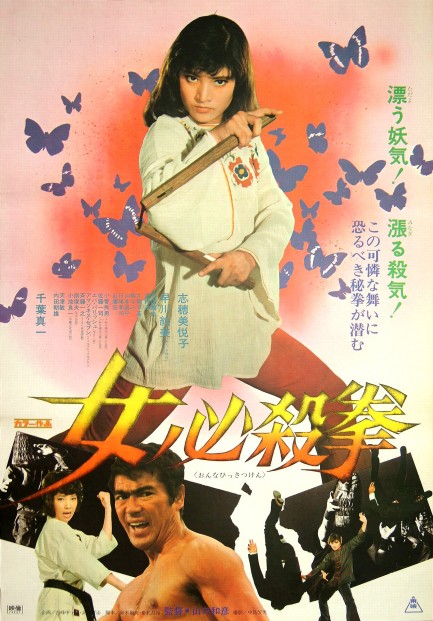
This rare poster was made to promote Onna hissatsu ken, aka Sister Street Fighter, which premiered in Japan today in 1974. The movie is fourth in the Street Fighter series, after The Street Fighter, The Return of the Street Fighter, and The Street Fighter's Last Revenge. In this one karate master and undercover drug agent Sonny Chiba goes missing in Tokyo, prompting his bosses to recruit his sister Etsuko Shihomi to search for him. Shihomi collects clues, allies, and esoteric enemies, but of course finally learns her brother is exactly where any viewer would expect—in the villain's lair, where he's been forcibly addicted to drugs. Generally, penetrating these evil underground strongholds is perfunctory, but in this film Shihomi has more problems than usual. She'll get there, though—what's a ’70s martial arts film without a subterranean showdown? It's all a bit silly and clunky, if surprisingly gory at the end. Interestingly, the movie tries to be instructive, actually freeze-framing to label certain martial arts techniques, weapons, and important characters. Weird, but okay. In the end Shihomi wins using basic stick-to-itiveness—with nunchakus upside multiple male craniums. Oh, and by the way, there are lots of reversed swastikas in this film. We talked about those, but if you missed that discussion check here. 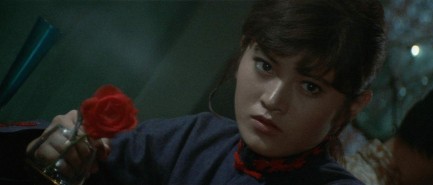 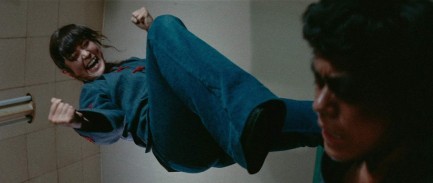 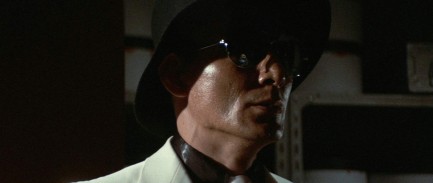 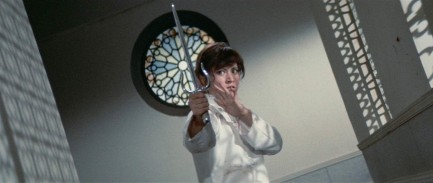 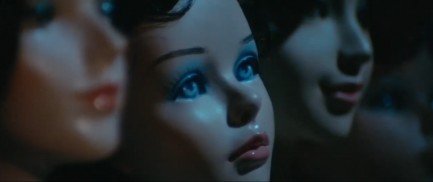 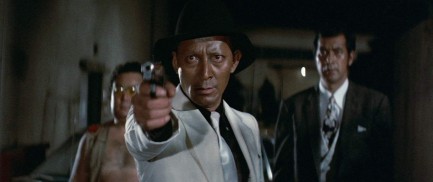 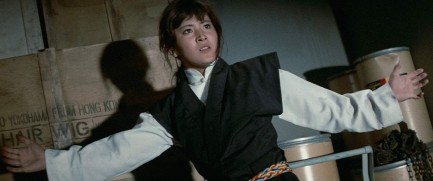 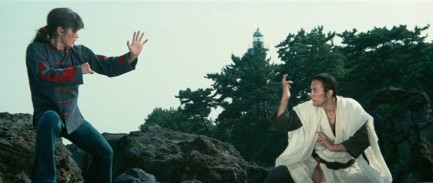 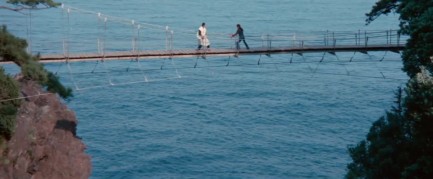 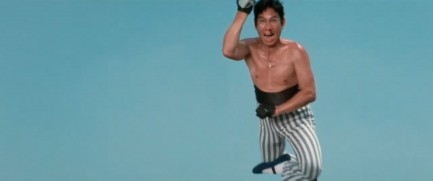 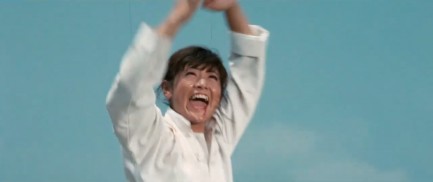 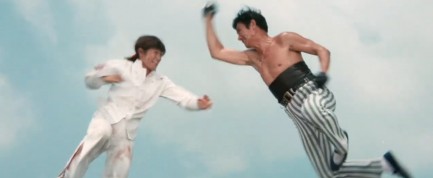 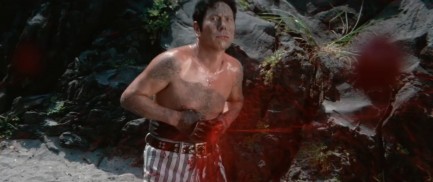 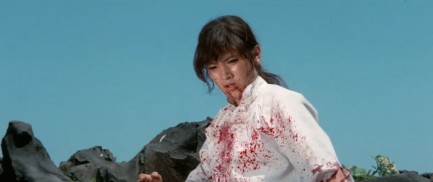
 Sony Chiba battles the mob in a breakout performance. 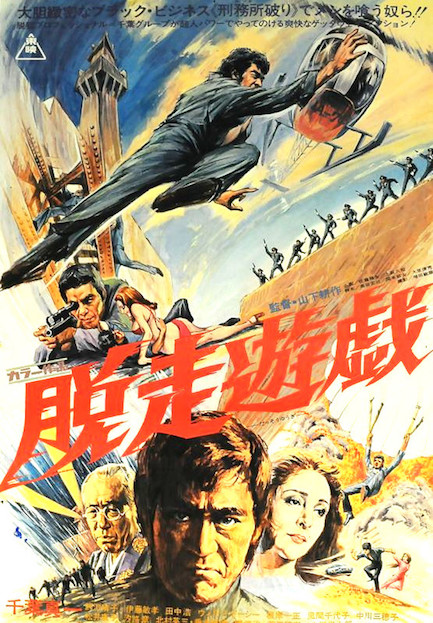 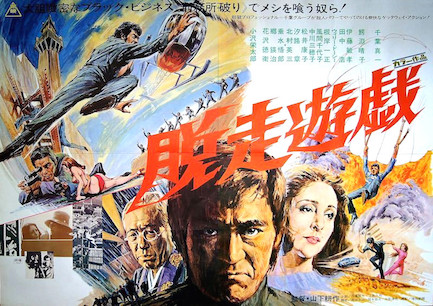
How many movies did Sonny Chiba appear in? Like two-hundred? It must be close to that. These posters were made to promote his actioner Dasso yugi, known internationally as Escape Game, or alternatively as Jail Breakers. Chiba plays a career criminal who breaks out of the joint and ends up joining a cartel that specializes in prison breaks. They're “escape coordinators.” It's a great set-up for a flick. However, Chiba fans who haven't seen this should be forewarned that he's no martial arts master here. He's just a regular ex-con trying to make a fast yen in the face of long odds. It's a pretty good film, with nice twists, fun stunts, a cool soundtrack, and, in Chiba, one of the most bankable stars of ’70s Japanese cinema. And while the movie doesn't feature his trademark martial arts, it does feature Haruko Hanibuchi in a co-starring role, and she's an art form all her own. We'll show you what we mean a bit later. Dasso yugi premiered in Japan today in 1976. 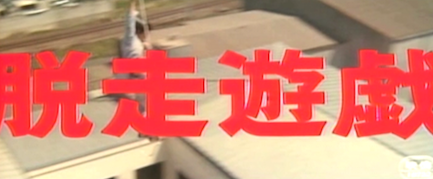 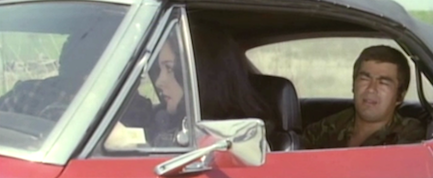 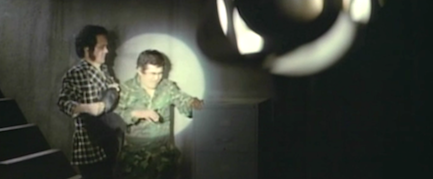 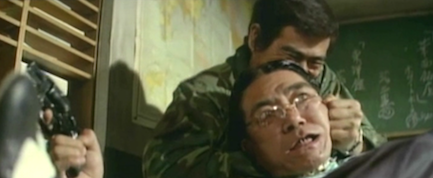 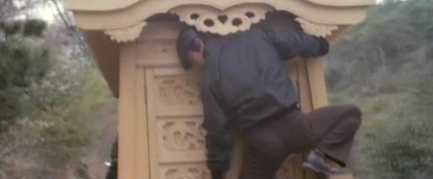 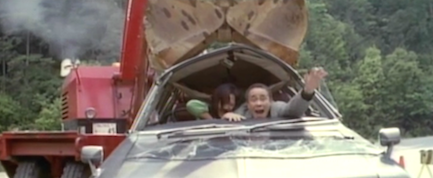 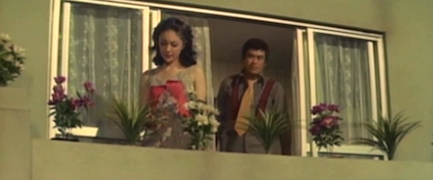 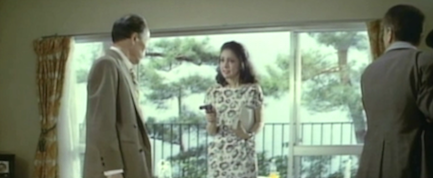  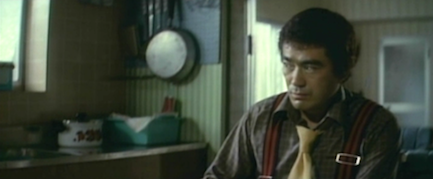 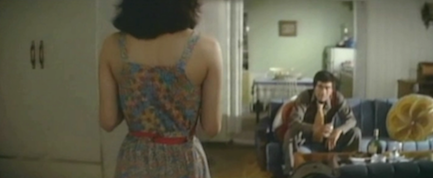
 A step by step guide to being a total badass. 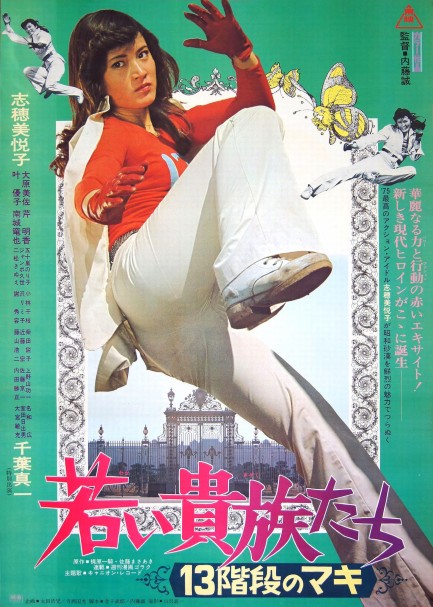
This incredibly cool collectible poster was made to promote Wakai kizoku-tachi: 13-kaidan no Maki, aka 13 Steps of Maki: The Young Aristocrats, which is more girl gang goodness from the schlockmeisters at Toei Company. Etsuko Shihomi (sometimes spelled Shiomi) plays Maki of the 13 Steps, leader of the Stray Cats, a group of very tough, martial arts trained femi-delinquents. Maki and the gang bury an arrogant one percenter up to her neck on a beach in retaliation for a traffic related insult, which is all good fun, but the victim is Takako, daughter of the powerful, yakuza connected owner of Ebihara Tourism. Once she digs herself out of the sand she retaliates. This in turn brings re-retaliation from the Cats, which brings re-re-retaliation from Takako, and pretty soon things are well out of control.
The movie is based on an Ikki Kajiwara/Masaaki Satô comic, and director Makoto Naitô uses some amazing comic book style, multi-character framing, as seen in our screen grabs below. This is top notch work from Toei's pinky violence line, about as fun as a Japanese actioner gets. And in supporting roles you'll encounter Sonny Chiba, Meika Seri, and Yûko Kanô. Watching movies like this almost makes up for all the Nikkatsu roman porno misfires we slog through. Almost. Etsuko Shihomi is considered a bit of a film icon in Asia because her martial arts skills were real, and she appeared in so many movies. We have numerous posters of hers to share later and they're even more amazing than this one. Wakai kizoku-tachi: 13-kaidan no Maki premiered in Japan today in 1975.
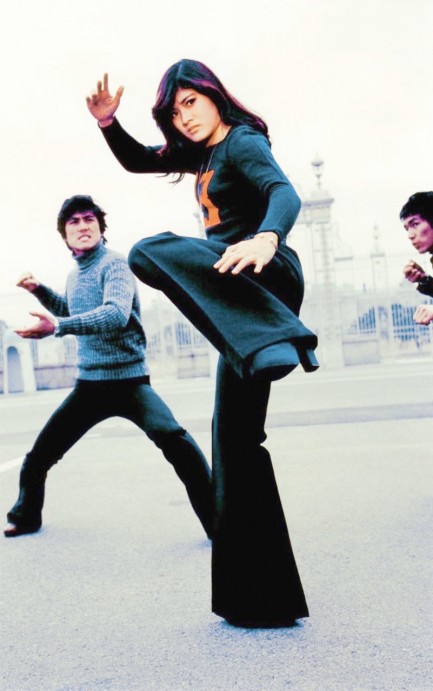 Step one is here, on the bottom of my platform boot. Have a close look. Step one is here, on the bottom of my platform boot. Have a close look.
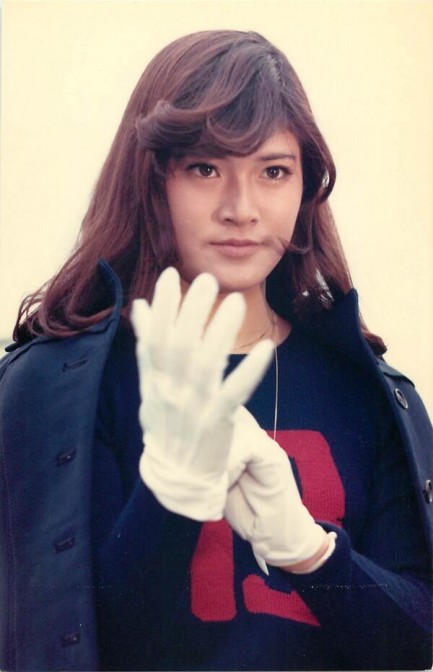 Step two is don't put your face where people tell you. We'll get to step three after you heal. Step two is don't put your face where people tell you. We'll get to step three after you heal.
 Etsuko Shihomi in hot pursuit. 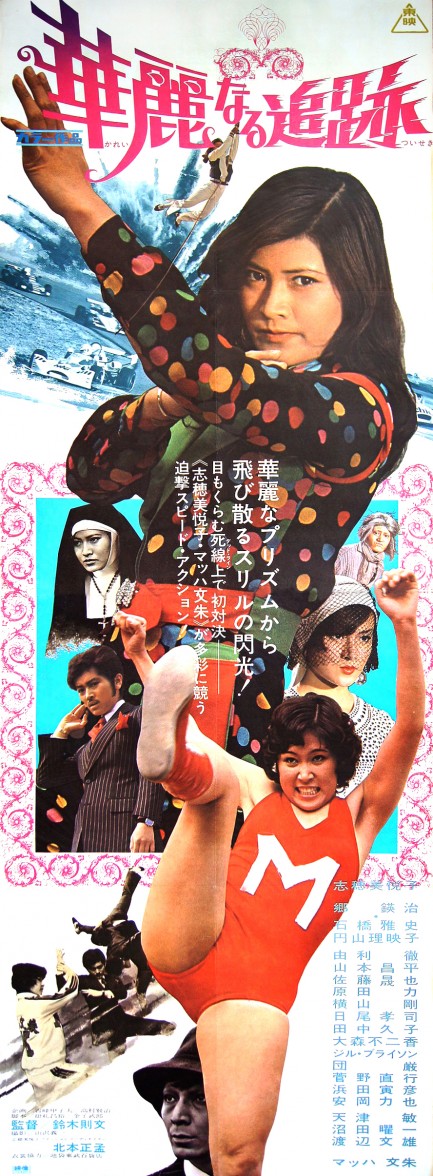
Above, an alternate promo for the Japanese actioner Karei-naru tsuiseki, aka The Great Chase, released today in 1975. This was surprisingly good. See the other poster and read about the movie here.
 There isn't much chasing in The Great Chase but the movie is definitely great. 
Norifumi Suzuki's Karei-naru tsuiseki, aka The Great Chase is fast, funny, and bizarre entertainment. Etsuko Shihomi plays a Formula 1 driver who also works for the Japanese secret service, in this case taking down an international drug syndicate. Shihomi was already a star in Japanese cinema from her supporting roles in Sonny Chiba's Streetfighter and its spin-offs. Karei-naru tsuiseki sees her honing her solo chops—literally, as she karates the shit out of dozens of guys. But you get so much more than fistfights here—you get Shihomi in disguises, a corpse filled with cocaine, a girl in armor being force fed a banana, a nun brawl in a church, a mob boss dressed as a bear, a fight on what has to be the world's highest cable car, and more. Pure cheese, but of the most flavorful sort, and with a top notch promo poster featuring Shihomi in a discolicious polka dot two-piece. We have posters for five other Shihomi actioners and she looks badass on all of them. We'll share those in the future. Karei-naru tsuiseki premiered today in 1975. 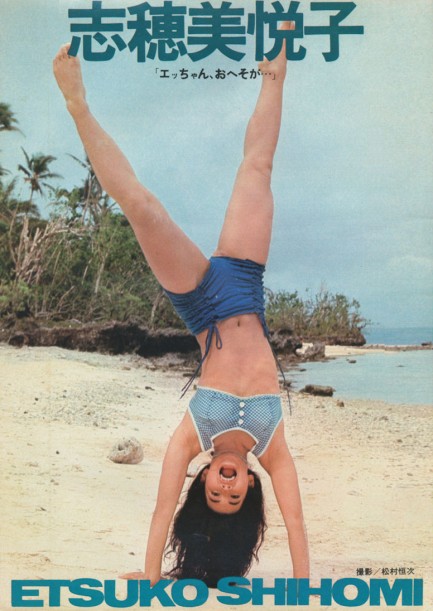
 Liars and tigers and bloodspray—oh mai! 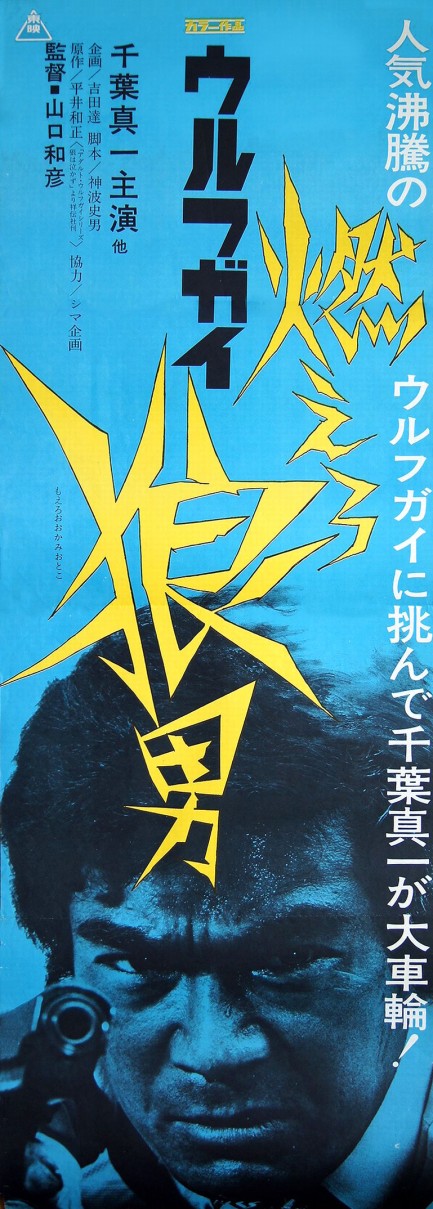 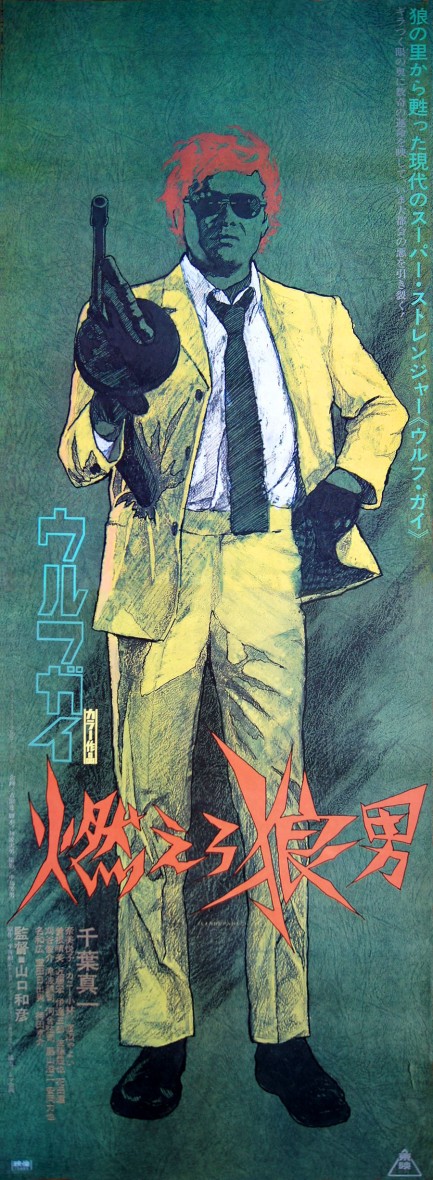
Beautiful and very rare, the two posters above were made to promote Toei Company’s Urufu gai: Moero ôkami-otoko, aka Wolfguy: Enraged Lycanthrope, a rollicking thriller that premiered in Japan today in 1975 and starred Shin’ichi Chiba, better known in the West as Sonny Chiba. Based on a manga series by Kazumasa Hirai, the movie involves a vicious invisible tiger that’s killing the members of a Tokyo rock band who gang-raped a woman named Miki and infected her with syphilis because a powerful politician wanted her relationship with his son sabotaged. The tiger is the manifestation of Miki’s curse. You may be saying to yourself, “But none of that has anything to do with lycanthropy.” You’d be right, but there is in fact lycanthropy here—Chiba the tough reporter is a werewolf. He can’t yet harness his power, but try telling that to J-CIA, a secret organization that will stop at nothing until they obtain Chiba’s vital fluids and create human-wolf hybrids. Hero and heroine’s paths and genitals eventually cross, and from this union Chiba realizes how to control his wolfly abilities. But there’s more, oh so much more, to this film. Urufu gai: Moero ôkami-otoko is gory good fun, low budget, but well worth a viewing thanks to Nami Etsuko as Miki and, of course, the legendary Chiba. Good luck tracking down a copy. Ours was a cable television rip with all the crazy Japanese commercials intact. 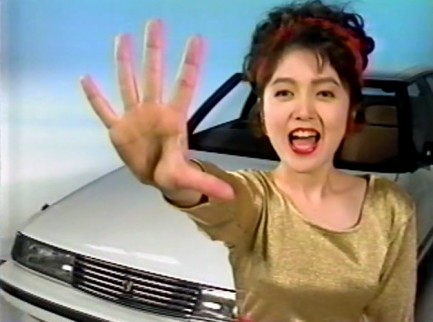 Hello Pulp International readers! I'm Commercial Girl. The Pulp guys have asked me to introduce five screenshots from Urufu gai: Moero ôkami-otoko. Please enjoy and have a wonderful Tuesday! Hello Pulp International readers! I'm Commercial Girl. The Pulp guys have asked me to introduce five screenshots from Urufu gai: Moero ôkami-otoko. Please enjoy and have a wonderful Tuesday! 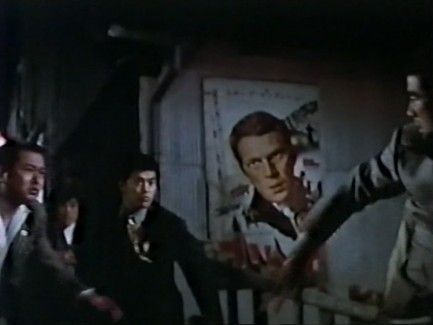 The enraged lycanthrope acquits himself admirably in a fight as none other than Steve McQueen the King of Cool looks on with studied approval. The enraged lycanthrope acquits himself admirably in a fight as none other than Steve McQueen the King of Cool looks on with studied approval. 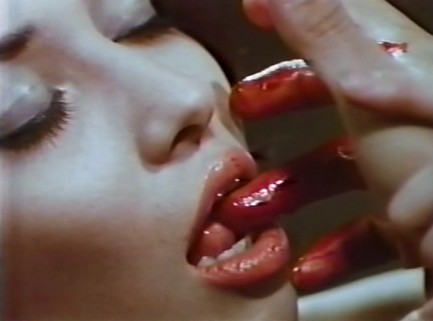 Some girls don’t like wolf blood so when you find one who digs it this much she’s a keeper. Napkins? Nonsense! This blood is finger licking good. Some girls don’t like wolf blood so when you find one who digs it this much she’s a keeper. Napkins? Nonsense! This blood is finger licking good. 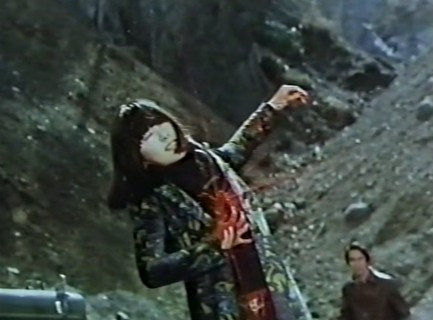 Wild thing you make my heart sing… and squirt like a lawn sprinkler. It’s just give give give with this girl. Wild thing you make my heart sing… and squirt like a lawn sprinkler. It’s just give give give with this girl. 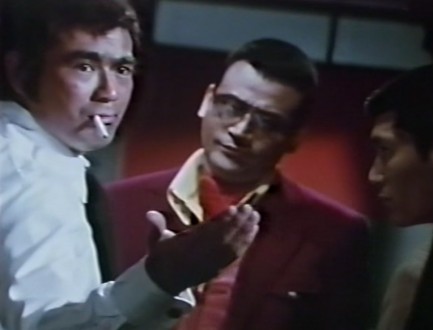 Hey, douche nozzles, why the fuck did I hire you? Look at my mouth. That thing hanging there? That's called a cigarette. What does it need? Here’s a hint—why does it emphysema like you never fuckin' listen? Hey, douche nozzles, why the fuck did I hire you? Look at my mouth. That thing hanging there? That's called a cigarette. What does it need? Here’s a hint—why does it emphysema like you never fuckin' listen? 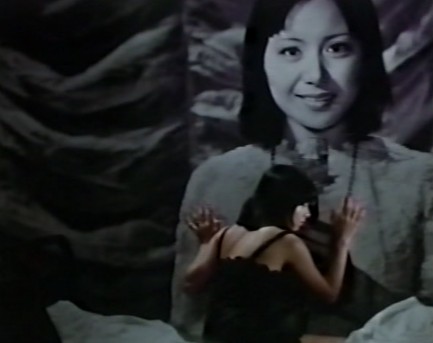 Shhh…I can hear her spirit speaking to me through her portrait. She says KFC bucket meals are 30% off for a limited time only. Um, Wolfguy, you turned off the tv in the other room, right? Shhh…I can hear her spirit speaking to me through her portrait. She says KFC bucket meals are 30% off for a limited time only. Um, Wolfguy, you turned off the tv in the other room, right? 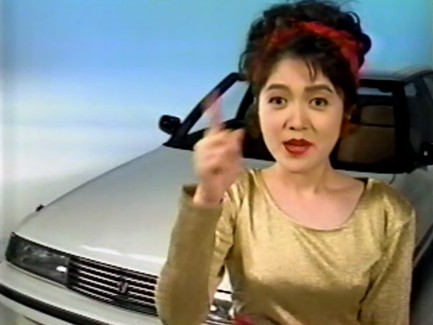 Hi! Commercial Girl here again. The Pulp guys say Tuesday sucks especially hard. Even more so when your fantasy baseball team goes 2 for 39 and you lose seventeen points! So here’s one more screenshot because you need extra cheering up! Hi! Commercial Girl here again. The Pulp guys say Tuesday sucks especially hard. Even more so when your fantasy baseball team goes 2 for 39 and you lose seventeen points! So here’s one more screenshot because you need extra cheering up!
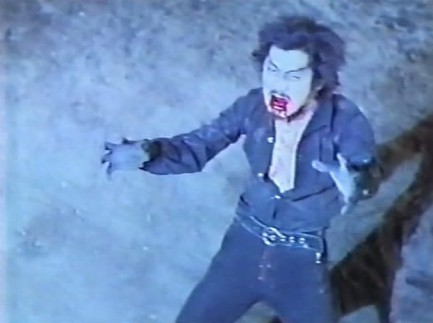 All of us in Kiss want every one of you out there to remember to rock 'n' roll all night and party EVERY DAY! Geishas RULE! Sushi and blow FOREVER! So long Tokyo! Or as you say here, Sayonara! All of us in Kiss want every one of you out there to remember to rock 'n' roll all night and party EVERY DAY! Geishas RULE! Sushi and blow FOREVER! So long Tokyo! Or as you say here, Sayonara!
 Sonny Chiba is the Duke of hazard. 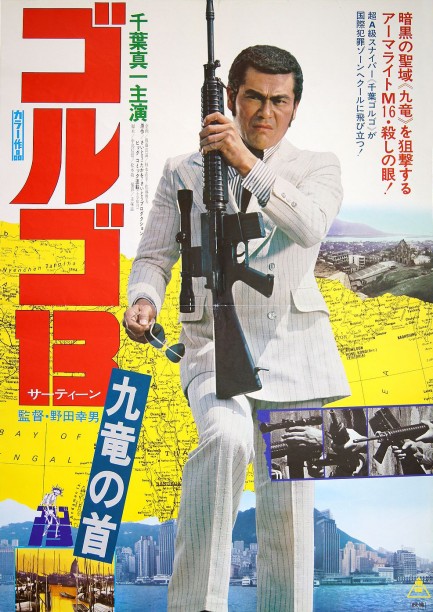
Above, a poster for Golgo 13: Kûron no kubi, aka Golgo 13: Assignment Kowloon, starring Sonny Chiba, who is better known as Shin’ichi Chiba in his native Japan and the rest of Asia. Chiba plays an assassin named Duke Togo, but codenamed Golgo 13, whose latest contract proves more complex than he imagined. The movie, based on a popular manga, was a Japanese production set in Hong Kong, and was an influence on the excellent crime thrillers that came out of Hong Kong in the 1980s, particularly those by John Woo. Plenty of reviews online so we won’t go into detail, except to say that this one is well worth a viewing, in our opinion. Golgo 13: Kûron no kubi premiered in Japan today in 1977.
 Slices a tomato so thin you can almost see through it! But wait! There’s more! It also works great on Yakuza! 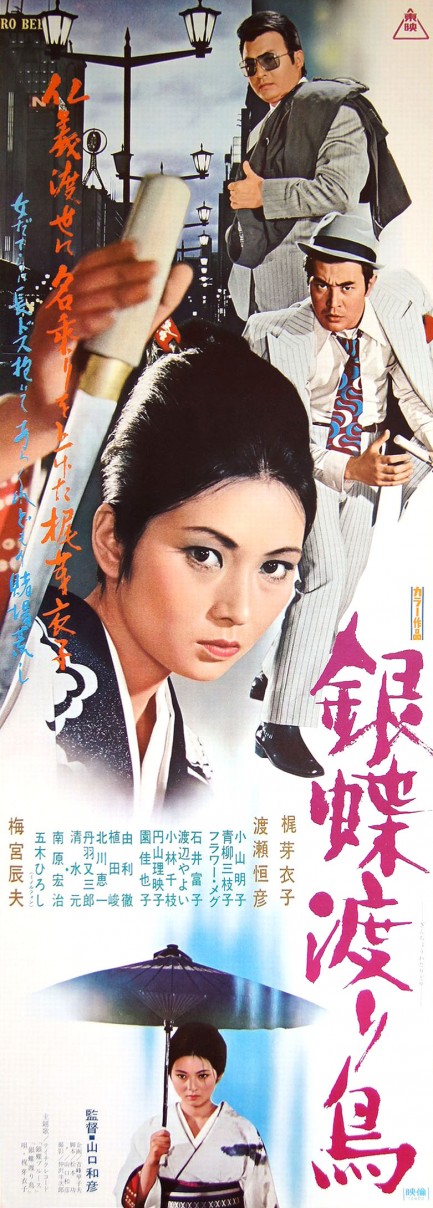
It’s been a while since we had any Meiko Kaji on the site, so today we have four posters—two normal sized and two panel length—for 1971’s Ginchô wataridori, aka Wandering Ginza Butterfly, and 1972’s Ginchô nagaremono mesuneko bakuchi, aka Wandering Ginza: She-Cat Gambler. Haven’t seen them? Well, in our opinion, part two is vastly better than the first installment, but neither is up to the standard of Lady Snowblood. Still though, there are Yakuza and she kills them. What more could you want? You also get Meg Flower in part one, and Sonny Chiba in part two—both good additions. Kaji is still going strong in show business, by the way, having appeared in nine episodes of the Japanese television series Kekkon Shinai in 2012. We have some extremely rare posters of hers we’ll get to shortly.
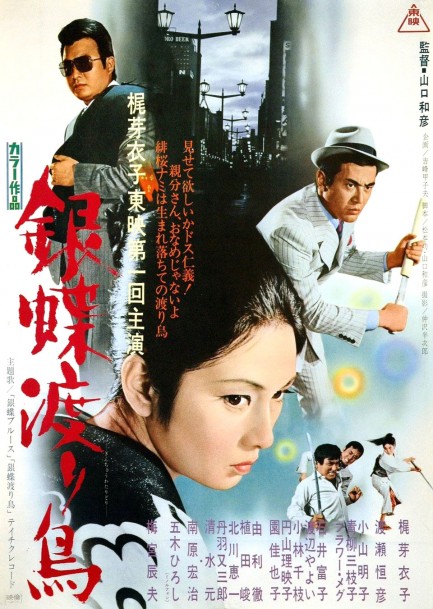 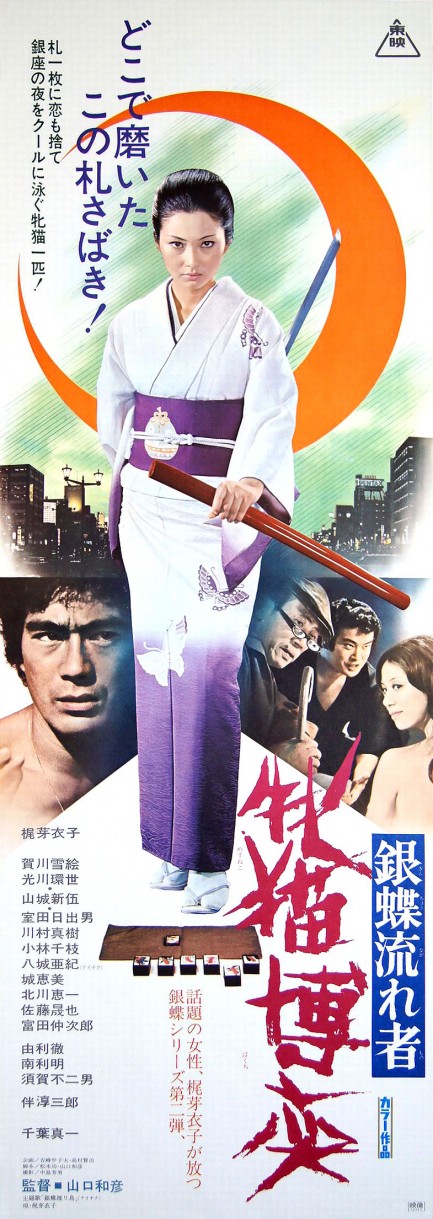 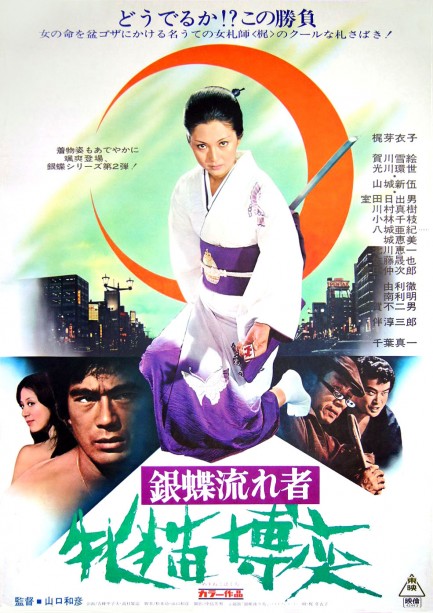
 Feets of strength and balance. 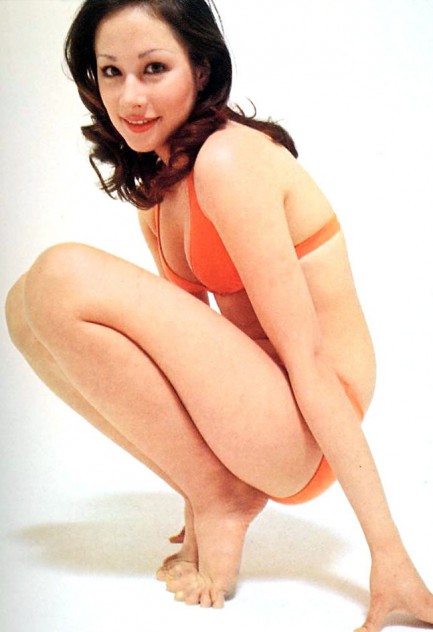
Half Japanese-half Anglo actress Janet Hatta started her working career as a flight attendant, then was discovered by a modeling agent, which led to cinema. She appeared in eight Japanese movies between 1974 and 1977 before moving on to television. Her films include Doberman deka with Sonny Chiba, and Ningen no shômei with Yukiko Mishima. No date on this shot, but assume circa 1975.

|
 |

The headlines that mattered yesteryear.
2003—Hope Dies
Film legend Bob Hope dies of pneumonia two months after celebrating his 100th birthday. 1945—Churchill Given the Sack
In spite of admiring Winston Churchill as a great wartime leader, Britons elect
Clement Attlee the nation's new prime minister in a sweeping victory for the Labour Party over the Conservatives. 1952—Evita Peron Dies
Eva Duarte de Peron, aka Evita, wife of the president of the Argentine Republic, dies from cancer at age 33. Evita had brought the working classes into a position of political power never witnessed before, but was hated by the nation's powerful military class. She is lain to rest in Milan, Italy in a secret grave under a nun's name, but is eventually returned to Argentina for reburial beside her husband in 1974. 1943—Mussolini Calls It Quits
Italian dictator Benito Mussolini steps down as head of the armed forces and the government. It soon becomes clear that Il Duce did not relinquish power voluntarily, but was forced to resign after former Fascist colleagues turned against him. He is later installed by Germany as leader of the Italian Social Republic in the north of the country, but is killed by partisans in 1945.
|

|
|

It's easy. We have an uploader that makes it a snap. Use it to submit your art, text, header, and subhead. Your post can be funny, serious, or anything in between, as long as it's vintage pulp. You'll get a byline and experience the fleeting pride of free authorship. We'll edit your post for typos, but the rest is up to you. Click here to give us your best shot.

|
|


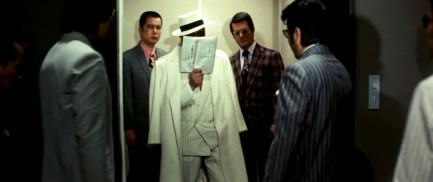
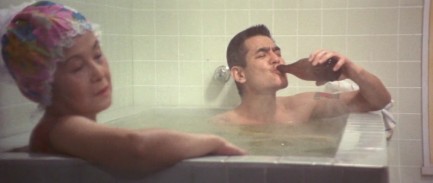
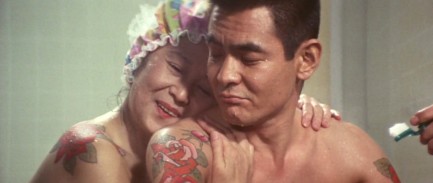
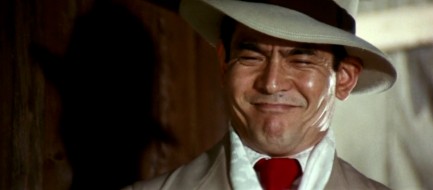
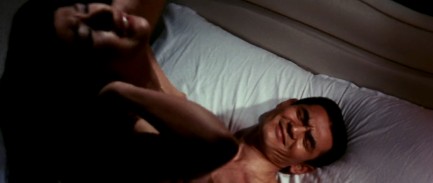
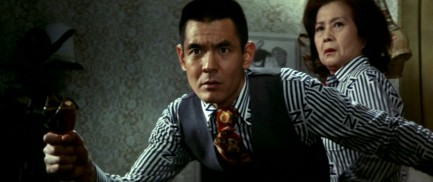
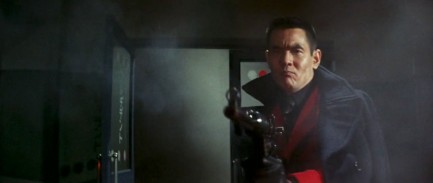
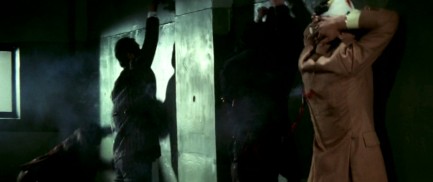
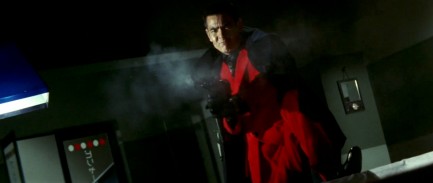

































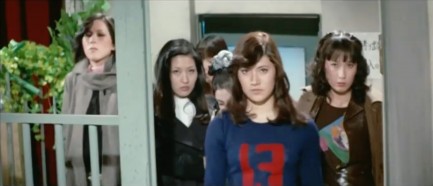
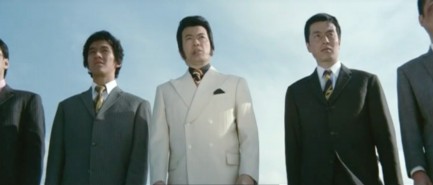
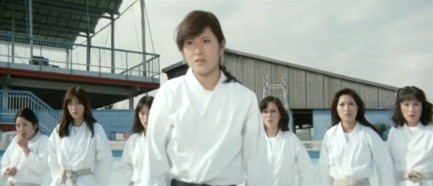
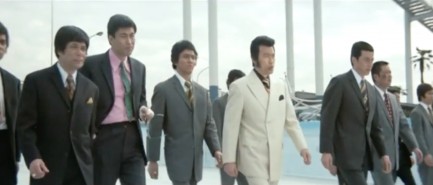
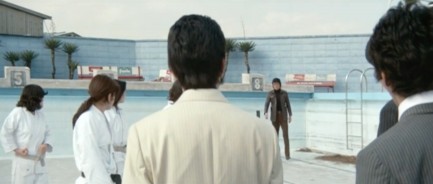
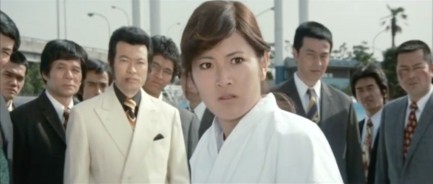
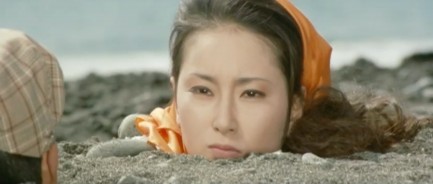
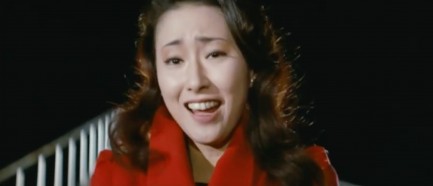

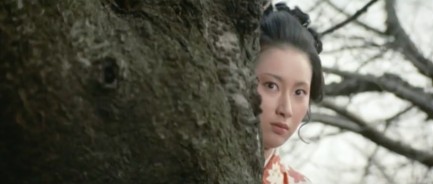
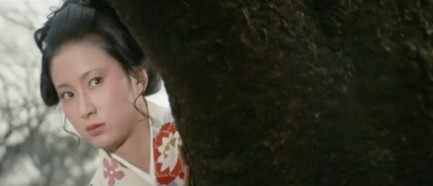
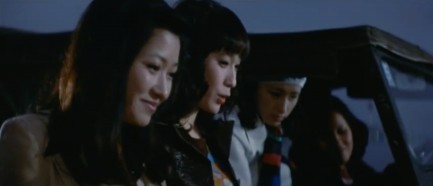

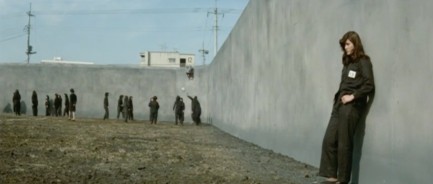
 Step one is here, on the bottom of my platform boot. Have a close look.
Step one is here, on the bottom of my platform boot. Have a close look. Step two is don't put your face where people tell you. We'll get to step three after you heal.
Step two is don't put your face where people tell you. We'll get to step three after you heal.







 Hello Pulp International readers! I'm Commercial Girl. The Pulp guys have asked me to introduce five screenshots from Urufu gai: Moero ôkami-otoko. Please enjoy and have a wonderful Tuesday!
Hello Pulp International readers! I'm Commercial Girl. The Pulp guys have asked me to introduce five screenshots from Urufu gai: Moero ôkami-otoko. Please enjoy and have a wonderful Tuesday! The enraged lycanthrope acquits himself admirably in a fight as none other than Steve McQueen the King of Cool looks on with studied approval.
The enraged lycanthrope acquits himself admirably in a fight as none other than Steve McQueen the King of Cool looks on with studied approval. Some girls don’t like wolf blood so when you find one who digs it this much she’s a keeper. Napkins? Nonsense! This blood is finger licking good.
Some girls don’t like wolf blood so when you find one who digs it this much she’s a keeper. Napkins? Nonsense! This blood is finger licking good. Wild thing you make my heart sing… and squirt like a lawn sprinkler. It’s just give give give with this girl.
Wild thing you make my heart sing… and squirt like a lawn sprinkler. It’s just give give give with this girl. Hey, douche nozzles, why the fuck did I hire you? Look at my mouth. That thing hanging there? That's called a cigarette. What does it need? Here’s a hint—why does it emphysema like you never fuckin' listen?
Hey, douche nozzles, why the fuck did I hire you? Look at my mouth. That thing hanging there? That's called a cigarette. What does it need? Here’s a hint—why does it emphysema like you never fuckin' listen? Shhh…I can hear her spirit speaking to me through her portrait. She says KFC bucket meals are 30% off for a limited time only. Um, Wolfguy, you turned off the tv in the other room, right?
Shhh…I can hear her spirit speaking to me through her portrait. She says KFC bucket meals are 30% off for a limited time only. Um, Wolfguy, you turned off the tv in the other room, right? Hi! Commercial Girl here again. The Pulp guys say Tuesday sucks especially hard. Even more so when your fantasy baseball team goes 2 for 39 and you lose seventeen points! So here’s one more screenshot because you need extra cheering up!
Hi! Commercial Girl here again. The Pulp guys say Tuesday sucks especially hard. Even more so when your fantasy baseball team goes 2 for 39 and you lose seventeen points! So here’s one more screenshot because you need extra cheering up! All of us in Kiss want every one of you out there to remember to rock 'n' roll all night and party EVERY DAY! Geishas RULE! Sushi and blow FOREVER! So long Tokyo! Or as you say here, Sayonara!
All of us in Kiss want every one of you out there to remember to rock 'n' roll all night and party EVERY DAY! Geishas RULE! Sushi and blow FOREVER! So long Tokyo! Or as you say here, Sayonara! 













































































